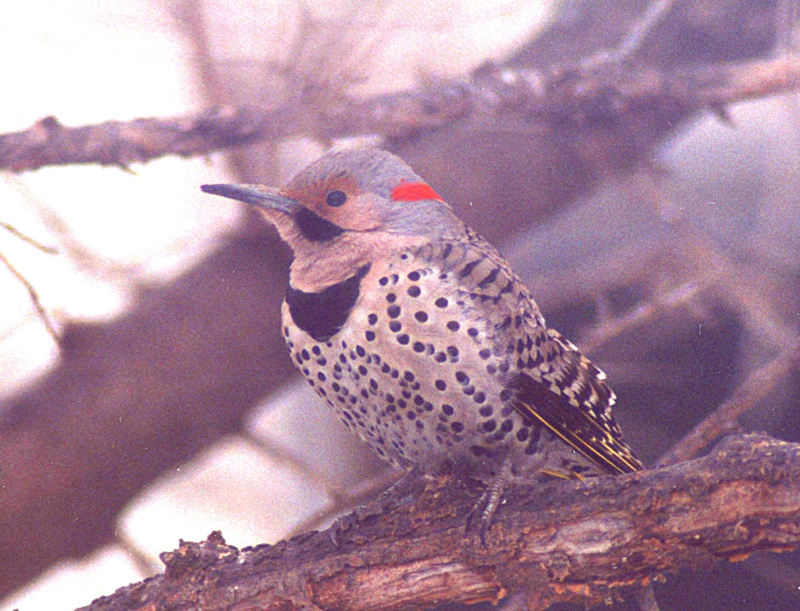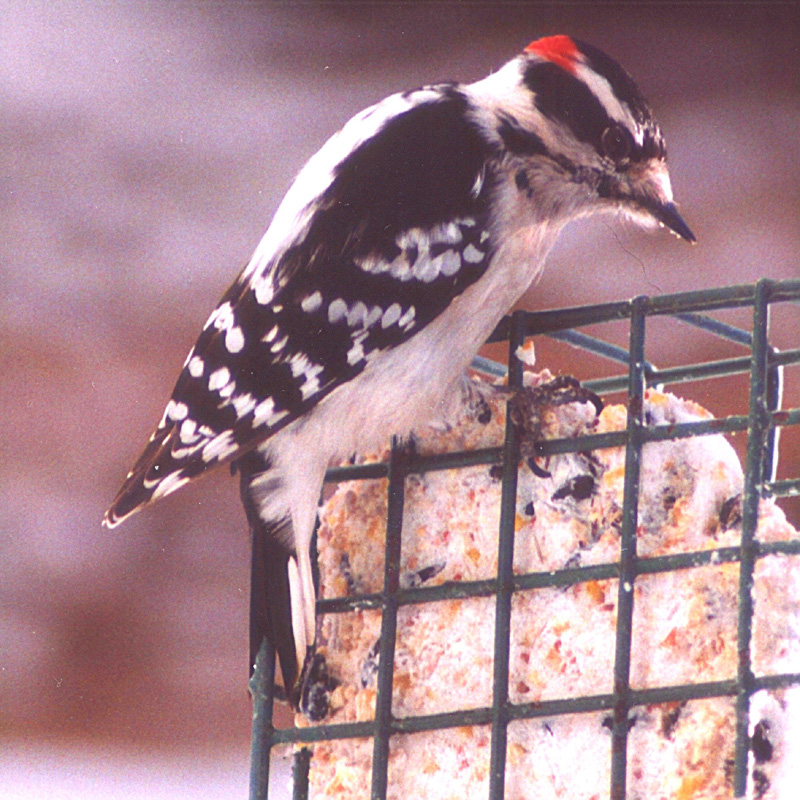|
The Ring Necked Pheasant, Phasianus colchicus, introduced to South Dakota in the 19th century, is now the official State Bird. Millions are found throughout the central and eastern parts of the state. The Big Sioux basin produces thousands of these beautiful birds yearly. This photo was taken along the edge of the river's west bank, along a fence in eastern Sioux Falls. For more info on this prolific Chinese import, go to:
The White Breasted Nuthatch (Sitta carolinensis), is one of the most common birds at feeders. This male was photographed on the west side of the Big Sioux. For more information on this friendly little tree hugger, go to: http://birds.cornell.edu/BOW/WBNH/
The Red Breasted Nuthatch (Sitta canadensis), is a winter resident of the Big Sioux. It often comes to feeders to feed on sunflower seeds, safflower seeds, and suet blocks, as in this photo. The river is 900 feet to the east of the feeder. For more information on the Red Breasted Nuthatch, go to:
The Green Heron (Butorides virescens), is a common resident of the Big Sioux. It often nests in the tall trees surrounding the river. For more info on the Green Heron, go to: http://birds.cornell.edu/BOW/RBNU/
Pictures seven and eight are of the Giant Canada Goose (Branta canadensis maxima). Photo seven shows an adult with gooslings, and photo eight shows two Canadas resting on the ice in late winter. These intelligent, beautiful birds spend both winter and summer on the Big Sioux river. The goose family was photographed near their nest on Spirit Island, in eastern Sioux Falls, and the sleeping birds near the Tutill Park dam. For more info on Canada Geese, go to: http://www.npwrc.usgs.gov/resource/1998/goosnest/goosnest.htm

|
| 9 Male Yellow Shafted Flicker |
The Yellow Shafted Flicker, (Colaptes auratus), is a large woodpecker that is often seen on the ground looking for ants. He visits feeders year around. This photo was taken west of the Big Sioux in March, 2002. For more info on this beautiful bird, go to:http://www.birdsofna.org/excerpts/flicker.html

|
| 10 Male Downy Woodpecker |
The Downy Woodpecker (Picoides pubescens), may be the most common woodpecker year around in South Dakota. He is about 6 inches long, with a red nape. The females lack the red spot. The Hairy Woodpecker is 3-4 inches longer than the Downy. The best way to tell them apart is the length of the beak, which on the Hairy is almost as long as his head, while the Downy's is half the length of his head. A suet block (as in the picture) will draw this beautiful bird to your yard, but he may start drilling holes in your house. The photo was taken just a few city blocks west of the river in Sioux Falls.
For more info on this little woodpecker, go to:http://birds.cornell.edu/pfw/AboutBirdsandFeeding/woodpeckerIDtable.htm
|
|
| 12 Male Red-Bellied Woodpecker |
The Red-bellied Woodpecker, Melanerpes carolinus, is often a year-round inhabitant of the Big Sioux River valley. This male was seen in March, 2002, along the river in Sioux Falls. Its drumming is in short bursts, about 1 second long. For more information on this beautiful bird go to:http://www.birdsource.org/gbbc/birdid/rewo/
The House Finch, Carpodacus mexicanus, was a Western U.S. bird that was sold, illegally, in New York as cage pets, named "Hollywood Finches" to sidestep the laws. When discovered, the dealers released the birds. That small base population is one of the reasons diseases, such as avian conjunctivitis, affect so much of the population. For more information on this disease, go to:http://birds.cornell.edu/hofi/
Probably the most widespread duck in the U.S., the Mallard ( Anas platyrhynchos), is found year around on the Big Sioux. The flying drake is seen over the brownish green water of the river, while the duck is in a slow flowing oxbow where cattails and duckgrass can grow. For more info on the popular Mallard in South Dakota go to : http://www.npwrc.usgs.gov/resource/distr/birds/sdatlas/species/13200.htm
The tiny Chipping Sparrow (Spizella passerina), is a sure sign of Spring. His bright rufus (reddish brown) crown is helpful in identification, along with the black eyeline and black bill. For more information on him, go to:
| 